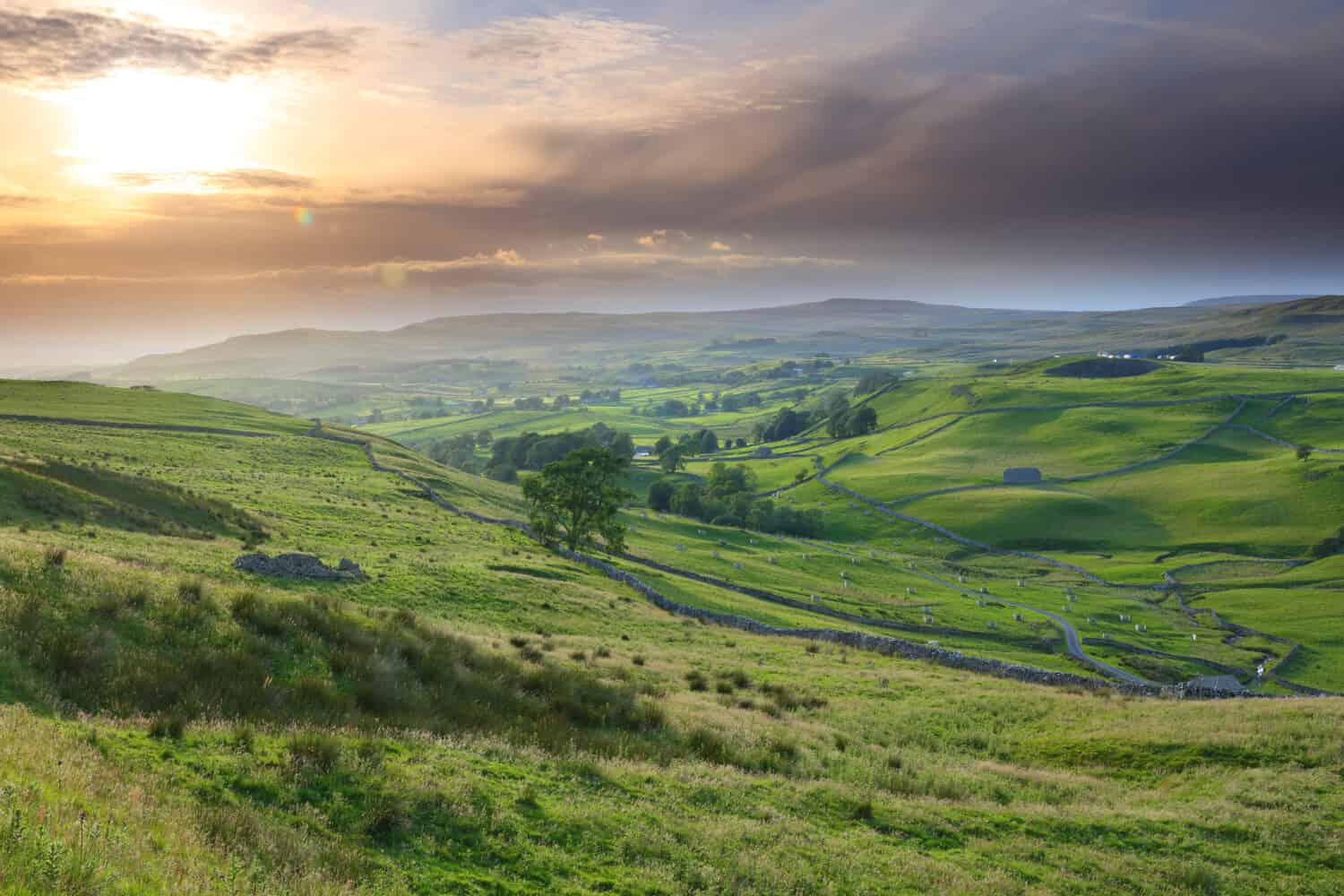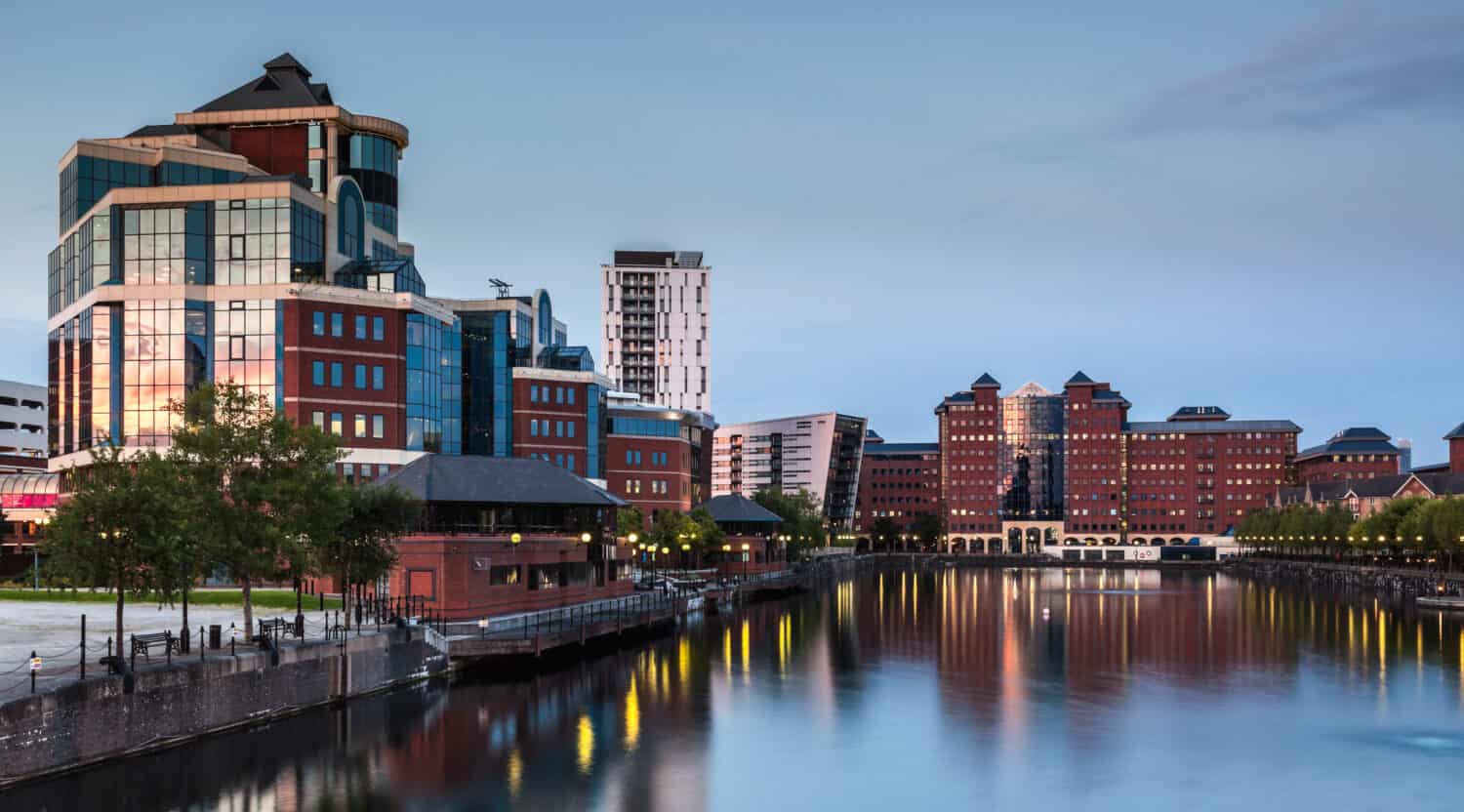England is a country steeped in history and culture, from the bustling city of London to the rolling hills of the countryside. It is a diverse and dynamic nation that offers so much to explore and discover. In this piece, we will take a deeper look into the size of England and what makes this country so unique.
From the white cliffs of Dover to the beautiful Lake District, we are set to embark on a journey that will showcase the rich history, heritage, and natural beauty of England. So, without further ado, let’s start our exploration of England!
How Big is England? Exploring Its Size In Miles, Acres, And Kilometers

The size of England in miles is generally estimated to be around 50,301 to 50,346 square miles.
©Ulf Wittrock/Shutterstock.com
Miles, Acres, and Kilometers
The size of England in miles varies slightly depending on the source, but it is generally estimated to be around 50,301 to 50,346 square miles (80951 to 81024 kilometers).
The length of England from the Scottish border in the north to the southern coast near the town of Dover is approximately 400 miles (640 kilometers).
The width at its widest point from the western coast near Wales to the eastern coast near the North Sea is approximately 300 miles (480 kilometers), according to Britannica.com.
In terms of acres, the land area of England is approximately 37.3 million acres.
What Is The Population Of England?
the population of England is estimated to be approximately 56.5 million people in 2021. This estimate is taken from the Office for National Statistics, which reports the population of England and Wales as a single entity. However, it is important to note that population estimates can vary based on the source and year of the data.
What Is The Population Density Of England?
the population density of England is approximately 434 people per square kilometer (1,124 people per square mile), as of 2021. However, the population density can vary widely across different areas of England, with higher densities in urban areas and lower densities in rural areas.
What Are The 5 Largest Cities In England Based On Size And Population?

London has an area of 607 square miles and a population of 9.3 million (as of 2020), making it the largest city in England.
©ESB Professional/Shutterstock.com
Based on both size and population, the 5 largest cities in England are:
- London – with an area of 607 square miles and a population of 9.3 million (as of 2020)
- Birmingham – with an area of 103.4 square miles and a population of approximately 1.1 million (as of 2023)
- Manchester – with an area of 44.6 square miles and a population of approximately 1.7 million (as of 2022)
- Liverpool – with an area of 43.6 square miles and a population of approximately 830,000 (as of 2022)
- Leeds – with an area of 550.2 square kilometers and a population of approximately 785,000 (as of 2022)
Please keep in mind that information on size may vary slightly depending on the source, and populations may also vary depending on the year of the data and the criteria used for defining a city or metropolitan area.
How Does The Size Of England Compare To Other Countries?
England is not one of the largest countries in terms of size when compared to other countries. However, its size may still be significant when compared to certain smaller countries or territories.
For example, according to a size comparison on the website MapFight, England is:
- 0.22 times the size of France
- 0.64 times the size of Germany
- 0.39 times the size of Spain
- 3.58 times the size of Belgium
- 1.34 times the size of Switzerland
- 0.23 times the size of Sweden
- 0.59 times the size of Norway
- 0.85 times the size of New Zealand
Please note that these comparisons are based on land area and may vary slightly depending on the source and criteria used for defining a country’s borders.
What Are The Largest Landmarks In England?

A landscape view of Stainmore near Kirkby Stephen in the North Pennines, Cumbria, England, UK. The Pennines is one of the largest natural features in England.
©Colin Ward/Shutterstock.com
Some of the largest natural features in England include the Pennines, which are a range of hills and mountains in northern England, and the Lake District, which is a national park in northwest England known for its large lakes and mountains. In terms of man-made features, some of the largest landmarks in England include airports, seaports, and cities, but it is difficult to compare these in terms of land mass as they are spread out over different areas.
How Big Is England Compared To Other Countries?
England is comparatively small in size compared to other countries. In terms of land area, England is approximately 0.22 times the size of France, 0.64 times the size of Sweden, and 0.39 times the size of Spain, according to a size comparison on MapFight.
In terms of population, England’s estimated population of approximately 56.5 million people is smaller than many other countries, including the United States, China, Russia, and Canada. However, it is important to note that comparing countries based solely on land area or population size does not provide a complete picture of their respective economic, cultural, and geopolitical importance.
What Is The Economic, Cultural, And Geopolitical Importance Of England?

Flag of the United Nations: England is a member of various international organizations, including the United Nations, playing an important role in global affairs.
©Denelson83, Zscout370 ve Madden / Public domain – Original / License
England has significant economic, cultural, and geopolitical importance. In terms of its economy, England is a major player in the global market, particularly in industries such as finance, technology, and healthcare. London is one of the world’s major financial centers, attracting investors and businesses from around the globe.
In terms of culture, England is known for its rich history, literature, and art, and its impact on the cultural landscape of the world is significant. England’s contributions to science and technology have also been substantial, with many important inventions coming from English inventors.
Geopolitically, England is a member of various international organizations, including the United Nations and the European Union, and plays an important role in global affairs. England’s former colonial empire has also left a lasting legacy on the geopolitical landscape of the world.
Overall, England’s economic, cultural, and geopolitical importance is significant, and its influence on global affairs is likely to continue for the foreseeable future.
In Conclusion
While the size of England may be an interesting topic to consider, it is worth noting that the size of a country is not necessarily the most important factor in determining its global economic impact. Despite its relatively small size, England has had significant economic, cultural, and geopolitical importance throughout history, making it a key player in global affairs.
The focus on size should perhaps be shifted to other factors, such as the country’s economic strengths, technological innovation, and cultural influence, which are often more important in determining its overall impact on the world stage.
Thank you for reading! Have some feedback for us? Contact the AZ Animals editorial team.








